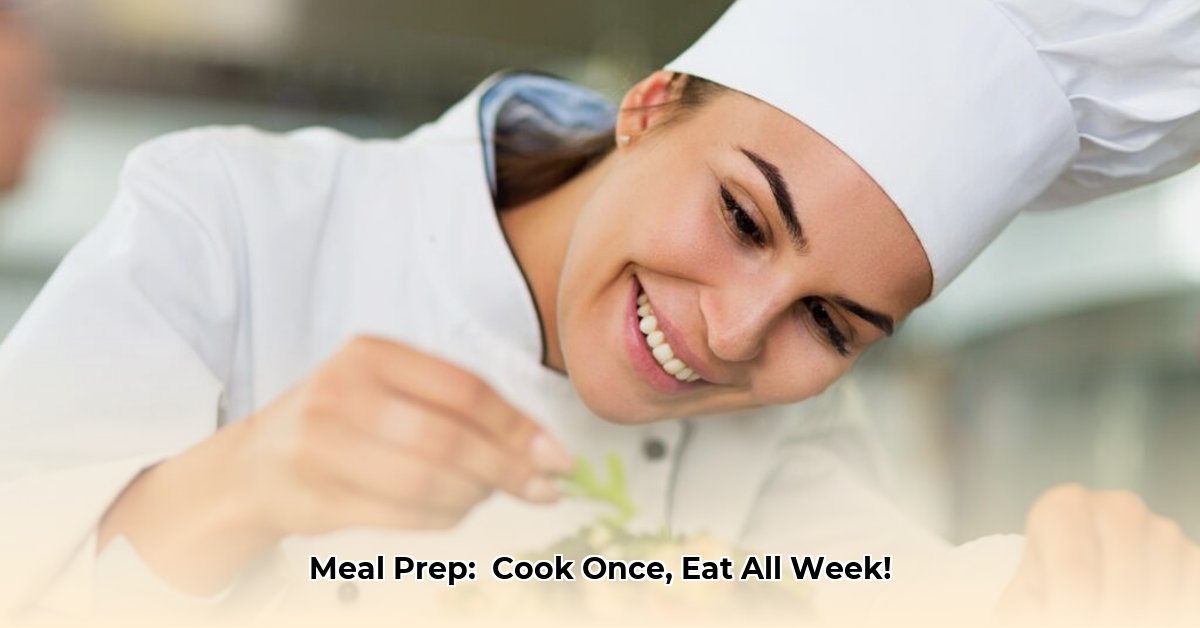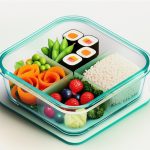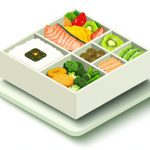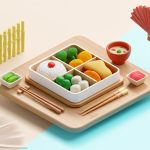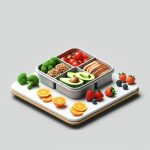Sick of the nightly dinner dilemma? Is grocery shopping a drag? This guide unveils the “Cook Once, Eat All Week” (COEAW) method, offering a step-by-step approach, from selecting recipes to sidestepping common mistakes. Discover why COEAW is ideal for busy schedules, with expert tips for success, and advanced techniques for streamlined meal preparation. Whether you’re a seasoned cook or a beginner, prepare to simplify cooking, reduce expenses, and minimize stress. For more meal planning inspiration, check out this 7-day healthy eating plan.
Cook Once, Eat All Week: Your Guide to Effortless Meal Prep
Ditch the daily “What’s for dinner?” panic and reclaim your evenings! The “Cook Once, Eat All Week” (COEAW) strategy unlocks easier, more budget-friendly meals. It’s about strategically prepping ingredients, not repetitive eating. Think of it as building blocks for diverse meals, eliminating endless recipe duplication. Ready?
Understanding the Cook Once, Eat All Week Philosophy
The central concept is straightforward: dedicate a few hours one day to prepare versatile ingredients such as proteins, grains, and vegetables and then creatively blend them throughout the week. Instead of being a short-order cook producing seven distinct meals, consider yourself a culinary architect creating a week’s worth of delectable dishes from a small number of essential components. It’s a culinary puzzle where the pieces can be rearranged to create a whole new experience each time.
Getting Started: Mastering the Cook Once, Eat All Week Plan
Planning is essential before you even touch a pan. This advance work yields significant time savings and reduces the likelihood of culinary boredom.
-
Menu Masterplanning: Begin by choosing 3-4 protein options (chicken breast, lentils, tofu, ground turkey). Select proteins that cook similarly. Next, select 2-3 grain options (quinoa, brown rice, whole wheat pasta). Finally, pick a diverse range of veggies (broccoli, bell peppers, carrots, spinach). Aim for ingredients that seamlessly transition between different meals.
-
Grocery Shopping – Streamlined: Shopping transforms into a laser-focused mission with a clear meal plan. No more unplanned browsing or impulse buys! Purchase only what you require, saving time and money, and preventing food waste. Consider ordering groceries online for even greater efficiency.
-
The Big Cook – Your Culinary Power Hour(s): Set aside a block of time (usually a weekend day) for your cooking session. Roast your vegetables, grill or bake your chicken, prepare your grains, and pre-portion sauces or dressings. The more you chop, slice, and dice in advance, the easier the week will be. Cassy Joy Garcia, founder of Fed & Fit [1], emphasizes the importance of pre-chopping to maximize efficiency. Enlist the help of family members to share the load and make it a group activity.
-
Portioning Perfection & Storage Solutions: Divide your cooked components into individual or family-sized portions. Invest in a set of high-quality, airtight, BPA-free containers. Proper storage is crucial for preserving freshness and minimizing waste. Glass containers are a great alternative to plastic and are microwave-safe.
-
Creative Combinations – Unleash Your Inner Chef: This is where the fun begins! Experiment with various combinations of your pre-made ingredients. One day, it could be chicken and vegetable bowls; the next, a hearty pasta dish. Don’t hesitate to be imaginative, add fresh herbs or spices, and explore new flavor profiles. Keep a log of successful combinations to repeat them in the future.
Sample Cook Once, Eat All Week Menu
Here’s a sample menu to inspire your meal prep journey. Feel free to tailor it to your personal preferences, dietary requirements, and what’s in season.
| Day | Meal | Components |
|---|---|---|
| Monday | Chicken & Veggie Stir-Fry | Cooked chicken, stir-fried broccoli and bell peppers, brown rice, soy sauce or teriyaki sauce |
| Tuesday | Chicken & Quinoa Salad | Cooked chicken, quinoa, chopped cucumber, tomato, mixed greens, and a light vinaigrette |
| Wednesday | Lentil Soup with Whole Wheat Bread | Lentils, carrots, celery, onions, vegetable broth, whole wheat bread, a dollop of Greek yogurt (optional) |
| Thursday | Leftover Remix (Creative Bowls) | Combine and repurpose any remaining components into a customizable bowl with various toppings |
| Friday | Turkey & Veggie Pasta | Ground turkey, whole wheat pasta, roasted vegetables, marinara sauce, grated Parmesan cheese (optional) |
| Saturday | Tofu Scramble with Roasted Sweet Potatoes | Tofu, roasted sweet potatoes, spinach, optional seasonings (turmeric, cumin, paprika), salsa or hot sauce |
| Sunday | Relax! Simple Meal | Enjoy a quick and easy meal, usually leftovers, takeout, or a simple homemade pizza |
Addressing Potential Meal Prep Challenges
Even with the best-laid plans, challenges can arise. Fortunately, there are solutions!
-
Leftover Limbo (Preventing Spoilage): Proper storage is paramount. Airtight containers are your best defense. Consider freezing portions for later use; this is an excellent way to extend the lifespan of your meal-prepped items. Use freezer-safe bags or containers and label them clearly with the date.
-
Meal Fatigue – Avoiding the “Same Old Thing” Blues: Variety is key! Experiment with different flavor combinations, cooking techniques, and cuisines. Add fresh herbs, spices, sauces, or dressings for a quick change of pace. Don’t be afraid to try new recipes and incorporate different cultural influences.
-
Time Commitment – The Upfront Investment: Yes, there is an initial investment of time on your designated cooking day. However, the long-term time savings are considerable. Consider it an investment in your mental health and increased leisure time during the week. Break up the tasks over a couple of shorter sessions if a single long session feels overwhelming.
Is Cook Once, Eat All Week Right for You?
The COEAW approach offers significant advantages: reduced food expenses, significant time savings, and healthier eating habits. It does, however, require some planning, preparation, and commitment. If you value convenience, healthy eating, and reducing stress in your life, this strategy could be transformative. It’s worth exploring if you’re looking to simplify your weeknight dinners and reclaim your evenings!
How to Optimize Cook Once Eat All Week Meal Prep for Busy Professionals
Key Benefits:
- Reduces weekly cooking time and shopping trips.
- Utilizes flexible base recipes applicable in various meals.
- Master bulk cooking, smart storage, and efficient reheating procedures.
Planning Your Cook Once, Eat All Week Menu: Strategic Recipe Selection
Before touching a pan, strategic planning is crucial to how to optimize cook once eat all week meal prep for busy professionals. Think of it as building a house; a solid foundation is key. Create a weekly menu that aligns with your schedule, dietary needs, and preferences. Choose recipes that share ingredients to minimize waste and maximize efficiency. Create a detailed shopping list based on your menu plan.
Mastering the Art of Bulk Cooking: Efficient Techniques
Now for the fun part: the actual cooking! The goal is to cook efficiently and effectively. Prepare your proteins, starches, and veggies in bulk. Consider roasting a whole chicken, cooking a large pot of quinoa or rice, and roasting a sheet pan of assorted vegetables. These components will form the foundation of your meals for the week. Utilize time-saving appliances like slow cookers,Instant Pots, or air fryers to streamline the cooking process.
Smart Storage Solutions: Maintaining Freshness and Quality
Proper storage is paramount. It’s the difference between delicious leftovers and food waste. Use airtight containers in the refrigerator. Label everything with the date of preparation. Freeze portions for longer storage. Cooked grains, for example, can be frozen for up to 2-3 months, according to the Food Safety and Inspection Service.
| Food Type | Storage Method | Shelf Life (Refrigerator) | Shelf Life (Freezer) | Key Considerations |
|---|---|---|---|---|
| Cooked Chicken | Airtight container | 3-4 days | 2-3 months | Ensure chicken is cooled completely before storing |
| Cooked Grains | Airtight container | 3-5 days | 2-3 months | Fluff grains before cooling to prevent sticking |
| Roasted Veggies | Airtight container | 3-4 days | 2-3 months | Roast veggies until slightly underdone for best results after reheating |
Repurposing Your Culinary Creations: Maximum Flavor, Minimum Effort
Now for the creative aspect! Transform your base ingredients into diverse and exciting meals. For example, if you roasted a chicken, use it in salads, tacos, soups, or sandwiches throughout the week. The same applies to your perfectly seasoned vegetables and cooked grains. The possibilities are limitless. Experiment with different sauces, spices, and herbs to create a variety of flavor profiles.
Reheating Your Meals: Optimizing for Taste and Texture
How you reheat your meals is crucial to maintaining their taste and texture. Some methods are more effective for certain dishes. Microwaving is quick and convenient but can sometimes dry out food. The oven is ideal for reheating baked dishes and keeping them moist. The stovetop is excellent for quickly reheating
- How Glass Bento Box Containers Make Meal Prep Easier - December 18, 2025
- Why Glass Boxes for Lunch Are Trending for Meal Prep - December 17, 2025
- Bento Box Glass Offers Practical, Eco-Friendly Meal Storage - December 16, 2025
